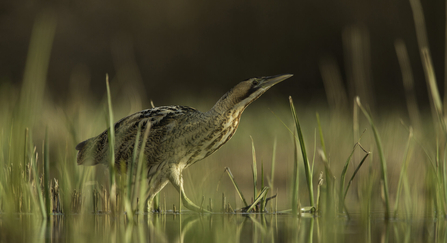The males make a distinctive ‘booming’ call to attract a mate — once heard, never forgotten! Somerset Wildlife Trust’s Westhay Moor NNR is a great place to catch up with this enigmatic bird.
The bittern, a type of heron, is a secretive species of tall, marshy habitats, especially reedbeds. Its cryptic, straw-coloured plumage can make it seem almost invisible to onlookers, which is why you should consider yourself very lucky if you manage to spot one!
Bitterns became extinct in the UK at the turn of the 20th century through habitat loss, and after making a recovery in the 1950s, they were nearly lost again locally in the 1990s, due to deep drainage for peat extraction. A second extinction was averted through concerted conservation work to create new reedbed habitats from these worked-out peat areas, especially in the Avalon Marshes. This area now boasts one of the biggest populations of bitterns in the UK, with regular sightings at Ham Wall (RSPB), Shapwick Heath (Natural England) and Westhay Moor (Somerset Wildlife Trust).


